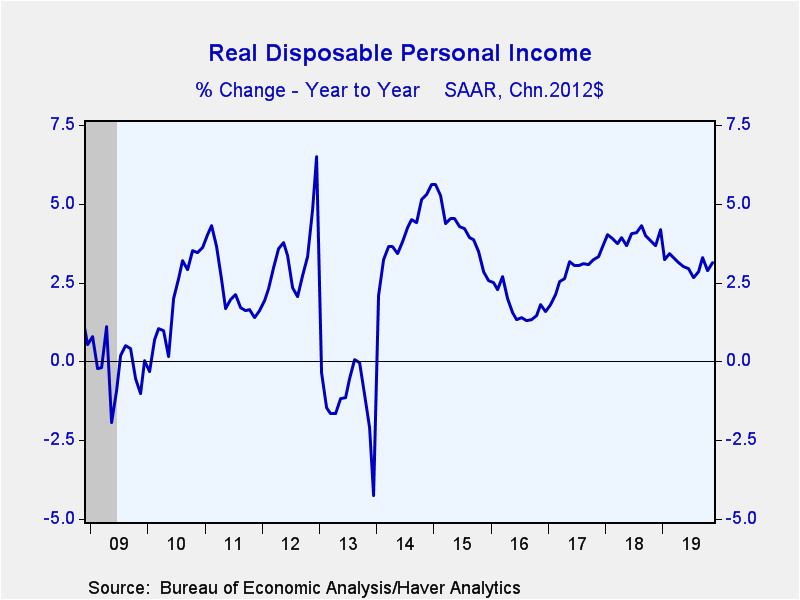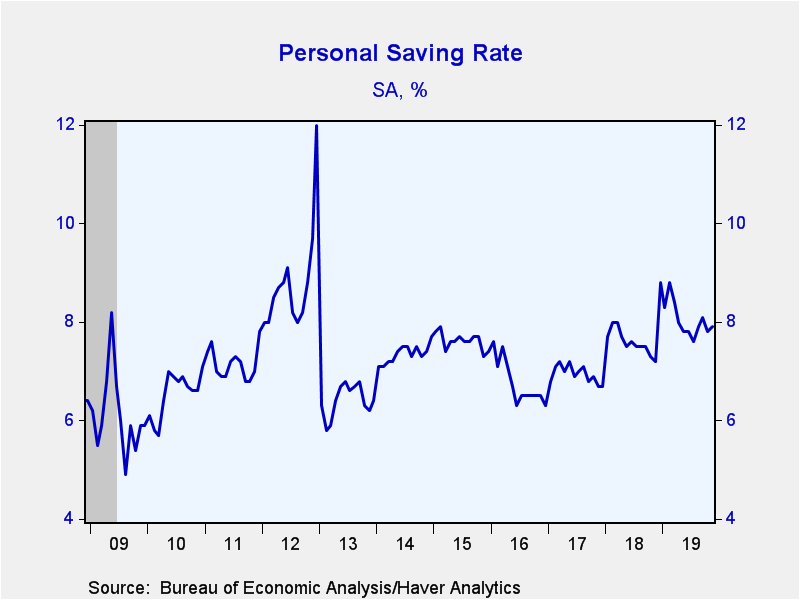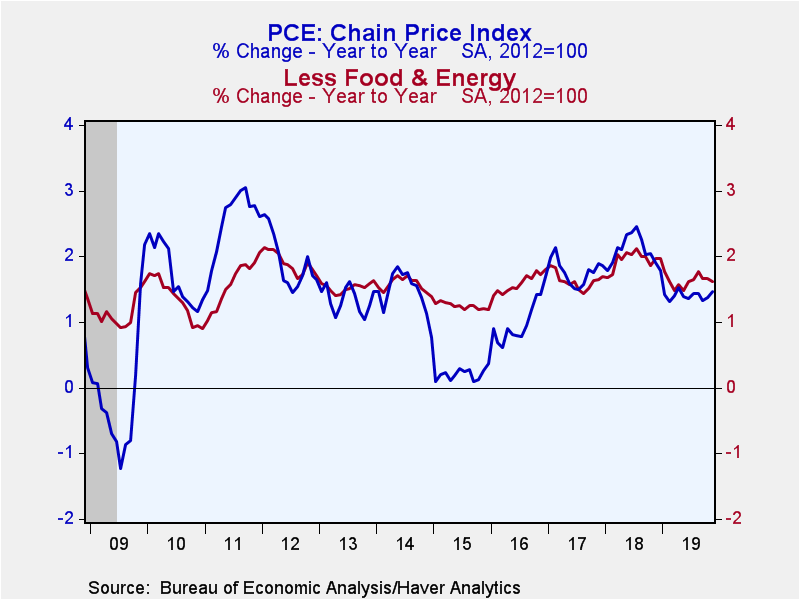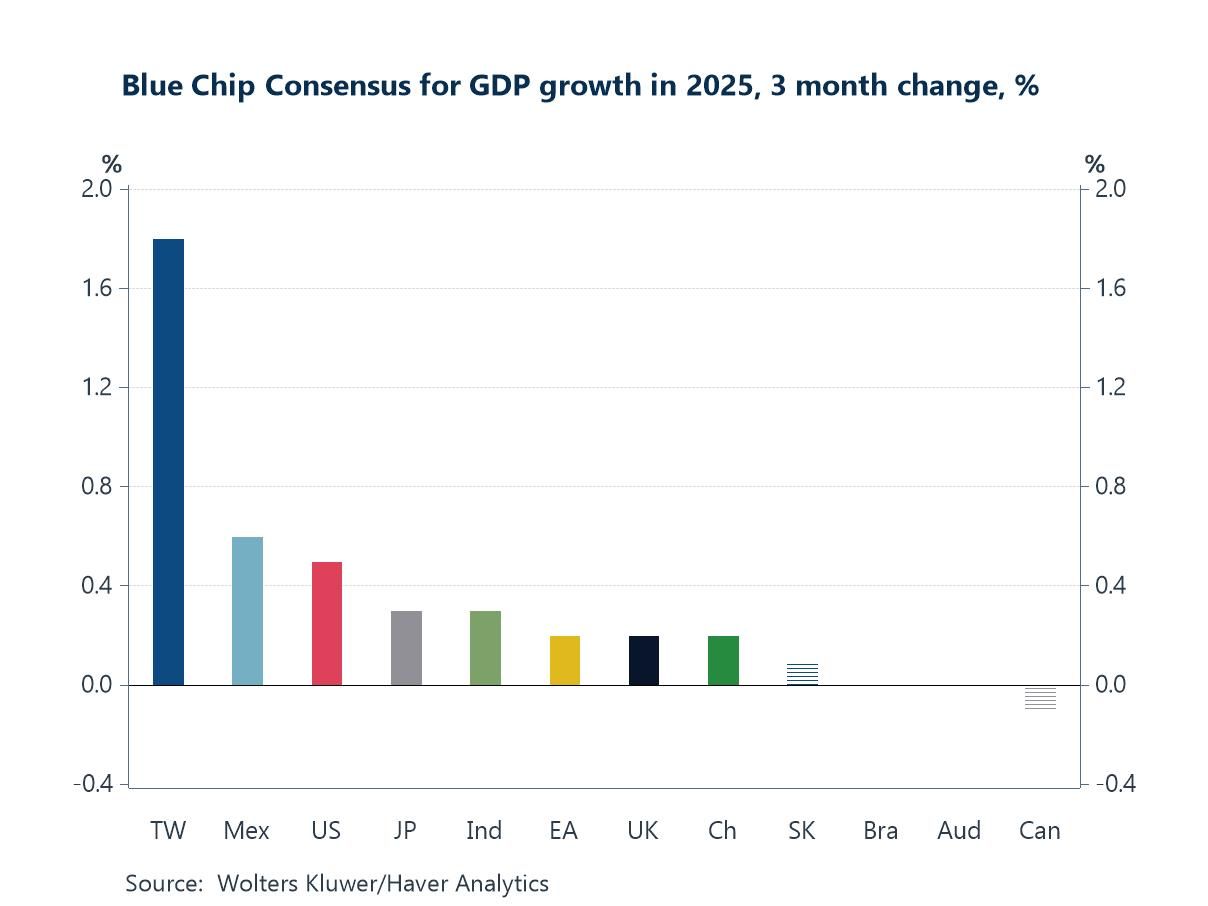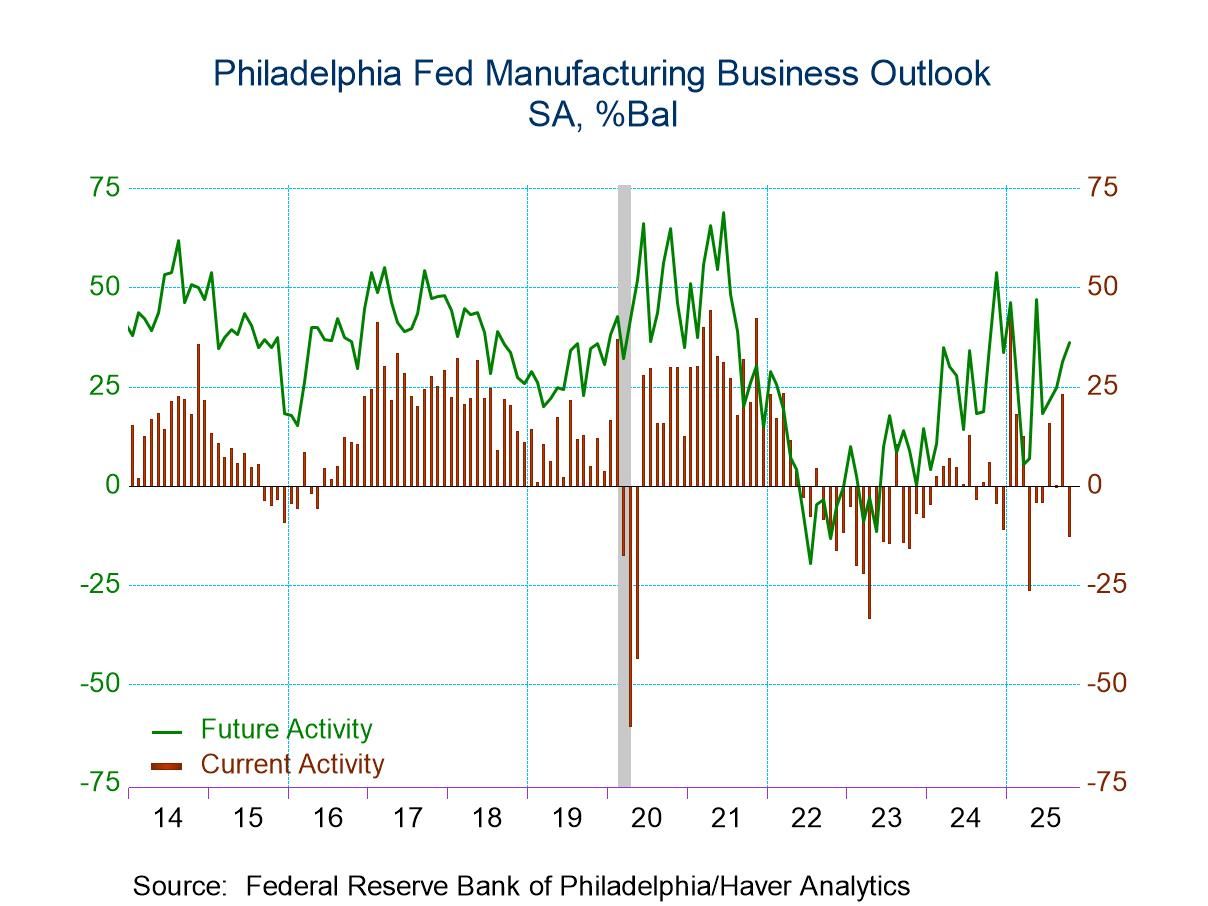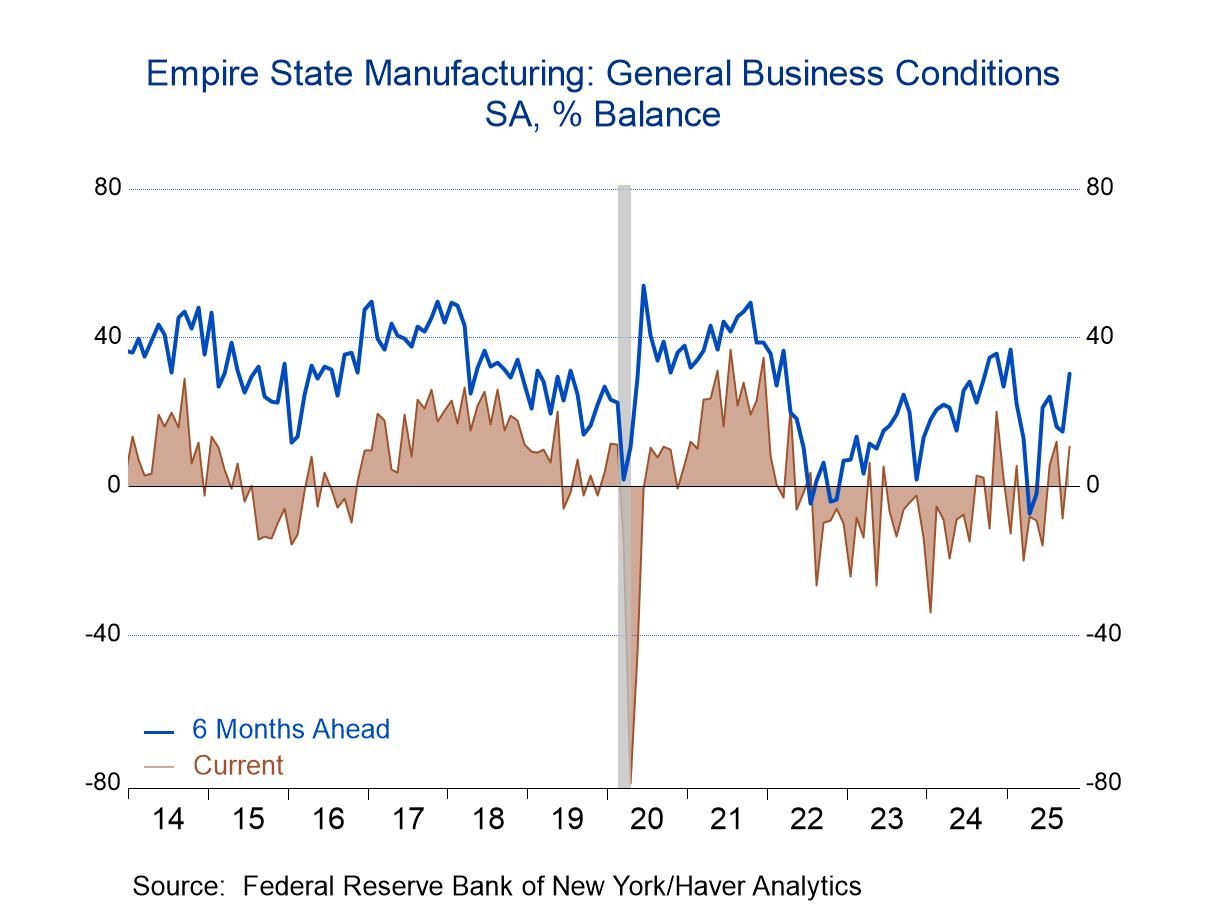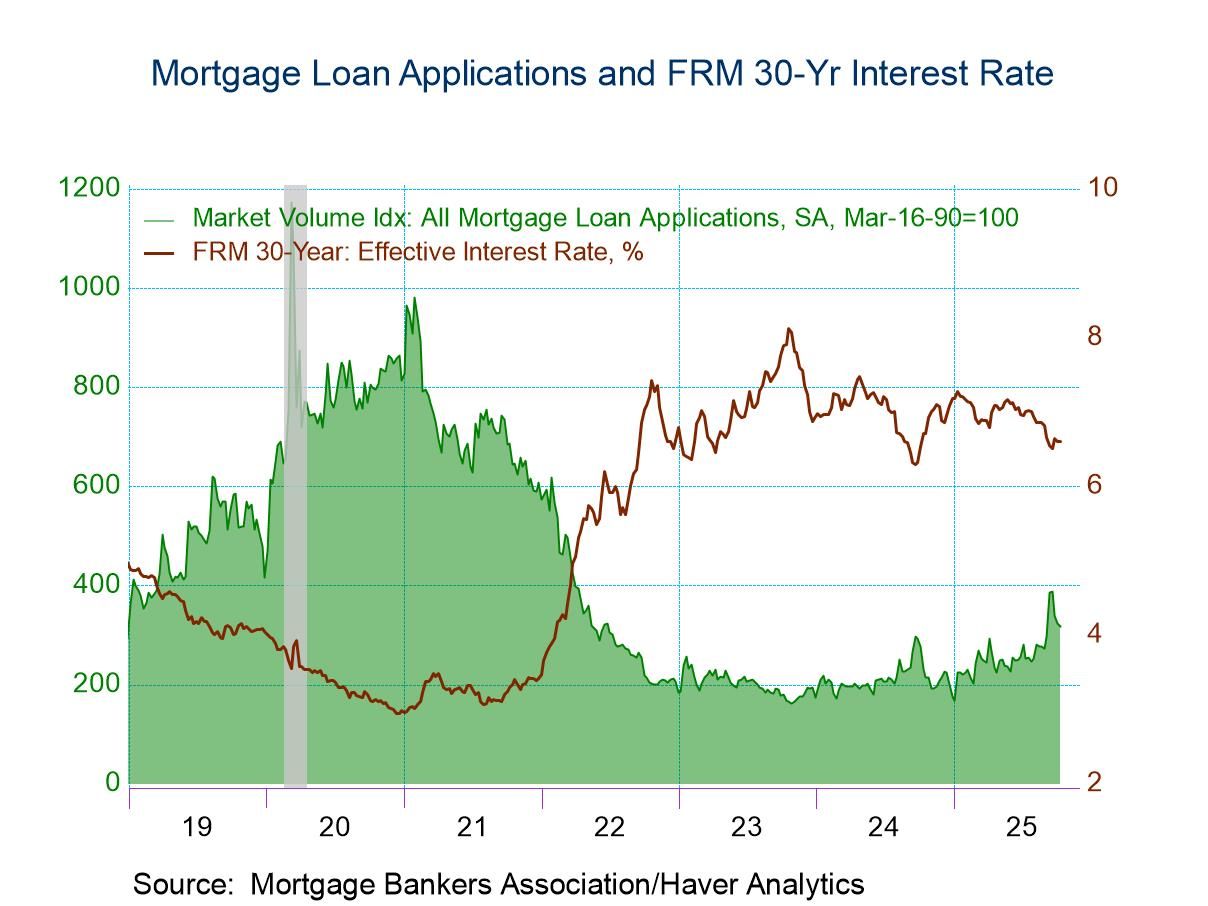 Global| Dec 20 2019
Global| Dec 20 2019U.S. Personal Spending & Income Gains Improve
by:Tom Moeller
|in:Economy in Brief
Summary
Personal consumption expenditures rose 0.4% (3.9% y/y) during November after an unrevised 0.3% October gain. The increase compared to a 0.4% rise expected in the Action Economics Forecast Survey. In constant dollars, spending [...]
Personal consumption expenditures rose 0.4% (3.9% y/y) during November after an unrevised 0.3% October gain. The increase compared to a 0.4% rise expected in the Action Economics Forecast Survey. In constant dollars, spending increased 0.3% ( 2.4% y/y), the strongest rise in four months. Real durable goods spending rose 1.2% (4.8% y/y) and reversed October's 1.0% decline. Spending on motor vehicles rose 2.3% (1.9% y/y) while recreational goods & vehicles outlays rose 1.1% (10.5% y/y. Real nondurable goods buying increased 0.1% (2.4% y/y) after a 0.3% gain. Apparel spending eased 0.3% (+1.5% y/y). Real spending on services rose 0.2% (2.0% y/y) for the fifth straight month. Health care spending rose 0.4% (3.6% y/y) but spending at restaurants fell 0.3% (+2.0% y/y).
Personal income strengthened 0.5% last month following a 0.1% uptick in October, revised from 0.0%. A 0.3% rise was expected. Wages & salaries improved 0.4% (5.3% y/y) after a 0.5% increase. Proprietors income rebounded 1.9% (5.6% y/y) and recovered the October decline. Rental incomes rose a steady 0.5% (3.0% y/y), and receipts on assets rebounded 0.8% (1.4% y/y) due to a 1.4% rise (0.2% y/y) in interest income. Transfer receipts edged 0.1% higher (7.5% y/y), the weakest increase in 12 months.
Disposable personal income rose 0.5% (4.6% y/y) after holding steady in October. Adjusted for price inflation, take-home pay increased 0.4% (3.1% y/y) and reversed October's 0.2% decline.
Last month's strength in income relative to the gain in spending raised the personal savings rate to 7.9% from 7.8%. The level of personal saving rose 14.3% y/y last month.
The PCE chain price index increased 0.2% (1.5% y/y), the same as in October. The price index excluding food & energy edged 0.1% higher (1.6% y/y) for the fourth straight month. Energy prices increased 0.8% (-0.7% y/y) after a 2.8% gain. Food prices held steady (0.9%) for the second month in the last three.
The personal income and consumption figures are available in Haver's USECON database with detail in the USNA database. The Action Economics figures are in the AS1REPNA database
Tom Moeller
AuthorMore in Author Profile »Prior to joining Haver Analytics in 2000, Mr. Moeller worked as the Economist at Chancellor Capital Management from 1985 to 1999. There, he developed comprehensive economic forecasts and interpreted economic data for equity and fixed income portfolio managers. Also at Chancellor, Mr. Moeller worked as an equity analyst and was responsible for researching and rating companies in the economically sensitive automobile and housing industries for investment in Chancellor’s equity portfolio. Prior to joining Chancellor, Mr. Moeller was an Economist at Citibank from 1979 to 1984. He also analyzed pricing behavior in the metals industry for the Council on Wage and Price Stability in Washington, D.C. In 1999, Mr. Moeller received the award for most accurate forecast from the Forecasters' Club of New York. From 1990 to 1992 he was President of the New York Association for Business Economists. Mr. Moeller earned an M.B.A. in Finance from Fordham University, where he graduated in 1987. He holds a Bachelor of Arts in Economics from George Washington University.



